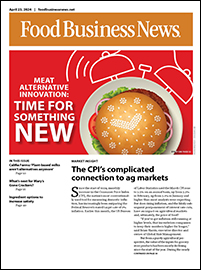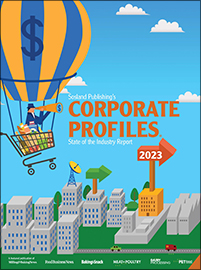 KANSAS CITY — Many employees who shifted to working from home during the COVID-19 pandemic and remained working remotely afterward may be going back to the office over the next three years. If more people return to offices, it may lead to another round of disruption to morning and afternoon eating patterns.
KANSAS CITY — Many employees who shifted to working from home during the COVID-19 pandemic and remained working remotely afterward may be going back to the office over the next three years. If more people return to offices, it may lead to another round of disruption to morning and afternoon eating patterns.
Chief executive officers participating in the consultancy KPMG’s annual CEO outlook survey overwhelmingly favored corporate employees returning to offices, with 86% saying they will reward employees who come into the office with favorable assignments, raises and promotions. The change was most startling in the number of CEOs who want employees in the office, which rose dramatically to 79% from 34% the year before. Only 17% of the CEOs surveyed said they favor hybrid work arrangements compared to 46% the year before.
The topic of remote workers returning to offices gained national attention in mid-September when Amazon.com, Inc. CEO Andy Jassy said company employees will be required to return to the office starting Jan. 2, 2025, five days a week. Jassy explained that it’s easier for employees to learn, collaborate, brainstorm and invent together in an office setting.
Determining the number of people working remotely full time or in a hybrid arrangement is difficult. The US Bureau of Labor Statistics estimates that 12.2% — or 20.5 million — of the US working population of 168.5 million work remotely full time and an additional 4.7 million work remotely at least half of the time.
While the number of people working remotely is a small slice of the US working population, many work in corporate jobs that tend to be higher paying. A survey from the Pew Research Center showed most remote workers earn an “upper income” compared to many lower- and middle-income workers who are not able to work remotely.
A survey by The Morning Consult, a market researcher, showed breakfast habits were the most likely to differ among worker types, with remote workers more likely to eat breakfast daily than people who work in offices. Among those who do eat breakfast, hybrid and office workers were more likely to tell Morning Consult they eat it on the go or at work on a typical weekday. A similar pattern has emerged during the lunch daypart.
A shift back to more people working from offices will have a ripple effect that may positively impact the morning and midday dayparts for businesses such as coffee shops, quick-service and fast-casual restaurants as well as convenience stores. The growth potential of each relies on greater consumer mobility.
But there also will be those businesses that are negatively affected, like companies serving the in-home coffee occasion, providing the ingredients to make breakfast or lunch, and even snacking, where it’s much easier to snack frequently at home with one’s preferred products than have the same options in the office.
For the marketers of food and beverages, the past five years must seem like whiplash, where significant events like the pandemic, supply chain shortages and inflation abruptly shifted where and what consumers shop for. Now people must prepare a potential shift back to before the pandemic.



